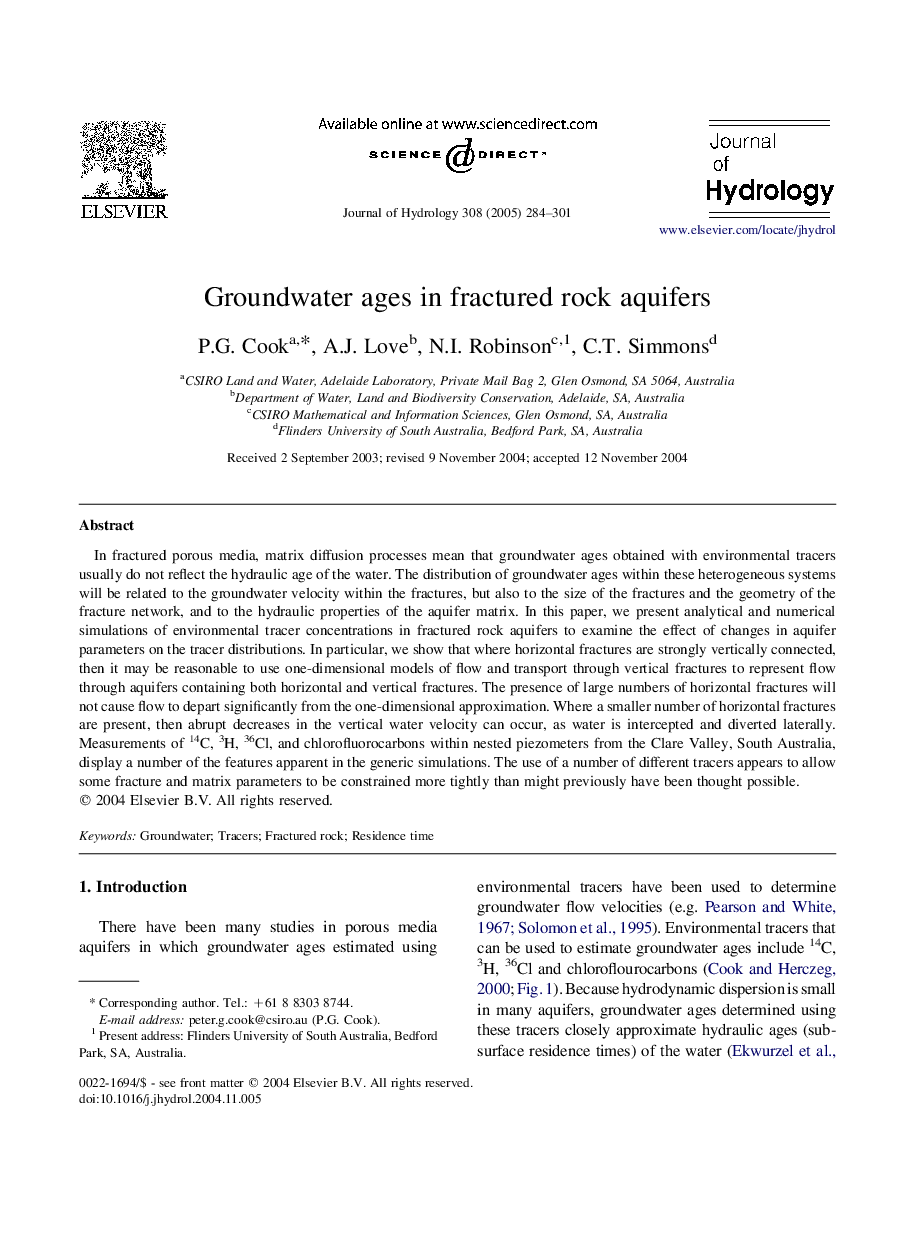| Article ID | Journal | Published Year | Pages | File Type |
|---|---|---|---|---|
| 9491464 | Journal of Hydrology | 2005 | 18 Pages |
Abstract
In fractured porous media, matrix diffusion processes mean that groundwater ages obtained with environmental tracers usually do not reflect the hydraulic age of the water. The distribution of groundwater ages within these heterogeneous systems will be related to the groundwater velocity within the fractures, but also to the size of the fractures and the geometry of the fracture network, and to the hydraulic properties of the aquifer matrix. In this paper, we present analytical and numerical simulations of environmental tracer concentrations in fractured rock aquifers to examine the effect of changes in aquifer parameters on the tracer distributions. In particular, we show that where horizontal fractures are strongly vertically connected, then it may be reasonable to use one-dimensional models of flow and transport through vertical fractures to represent flow through aquifers containing both horizontal and vertical fractures. The presence of large numbers of horizontal fractures will not cause flow to depart significantly from the one-dimensional approximation. Where a smaller number of horizontal fractures are present, then abrupt decreases in the vertical water velocity can occur, as water is intercepted and diverted laterally. Measurements of 14C, 3H, 36Cl, and chlorofluorocarbons within nested piezometers from the Clare Valley, South Australia, display a number of the features apparent in the generic simulations. The use of a number of different tracers appears to allow some fracture and matrix parameters to be constrained more tightly than might previously have been thought possible.
Related Topics
Physical Sciences and Engineering
Earth and Planetary Sciences
Earth-Surface Processes
Authors
P.G. Cook, A.J. Love, N.I. Robinson, C.T. Simmons,
